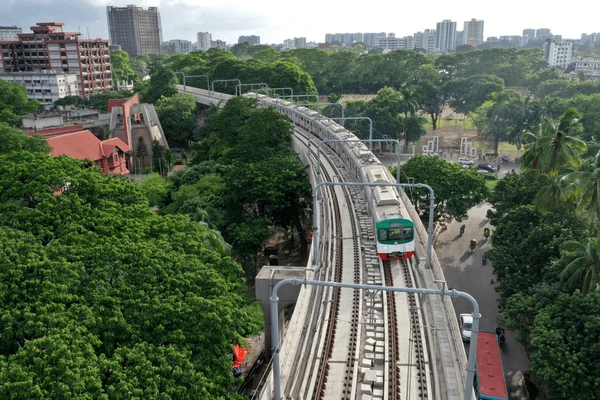The Union Cabinet’s recent approval of two new Delhi Metro corridors, namely the Lajpat Nagar to Saket G-Block and Inderlok to Indraprastha lines, marks a significant milestone in the expansion of Delhi’s urban transportation infrastructure. This decision comes as a response to the growing need for enhanced connectivity and efficient public transportation solutions in the national capital region.
The Lajpat Nagar to Saket G-Block corridor, spanning approximately 8.4 kilometers, will primarily serve South Delhi areas, including Lajpat Nagar, Andrews Ganj, and Greater Kailash. The corridor will feature eight stations, strategically located to connect with existing metro lines such as the Silver, Magenta, Pink, and Violet Lines operated by the Delhi Metro Rail Corporation (DMRC). The inclusion of stations at prominent commercial and residential hubs like Saket District Centre and Pushp Vihar will significantly improve accessibility and ease of commute for residents and visitors alike.
Similarly, the Inderlok to Indraprastha corridor, covering a distance of around 12.4 kilometers, will provide vital connectivity between key locations in Delhi and neighboring regions. This corridor, primarily underground with a small elevated stretch, will feature ten stations, including major interchanges with the Red, Yellow, Airport Line, Magenta, Violet, and Blue Lines of the Delhi Metro network. With stations located at strategic points such as New Delhi, LNJP Hospital, and Delhi Sachivalaya, the corridor will facilitate seamless travel for commuters traversing diverse parts of the city.
The significance of these new metro corridors lies in their potential to alleviate traffic congestion, reduce pollution levels, and enhance overall mobility in Delhi. By offering fast, reliable, and convenient transportation options, the corridors will encourage more people to opt for public transit, thereby reducing reliance on private vehicles and promoting sustainable urban development. Additionally, improved connectivity to areas like Bahadurgarh in Haryana will stimulate economic growth and social development in the surrounding regions.
The implementation of these metro corridors is part of the larger Delhi Metro Phase-IV project aimed at expanding the metro network and enhancing connectivity across the national capital region. The project’s estimated cost of ₹8,399 crore will be jointly funded by the Union and Delhi governments, along with contributions from international funding agencies. Scheduled for completion by March 2029, the corridors are expected to significantly enhance Delhi’s public transportation infrastructure and cater to the evolving needs of its growing population.
The decision to approve these metro corridors underscores the government’s commitment to prioritizing sustainable and inclusive urban development. By investing in critical infrastructure projects like the Delhi Metro, authorities aim to address the challenges posed by rapid urbanization, population growth, and increasing vehicular congestion. The corridors’ strategic alignment with existing metro lines and key urban centers reflects a holistic approach to transportation planning, aimed at maximizing connectivity and accessibility for all residents.
Furthermore, the introduction of these new metro corridors is expected to have far-reaching socio-economic benefits for Delhi and its neighboring regions. Enhanced connectivity will facilitate easier access to employment opportunities, educational institutions, healthcare facilities, and recreational amenities, thereby improving overall quality of life for residents. Additionally, the corridors will catalyze economic activity, stimulate investment, and create employment opportunities, contributing to the region’s overall prosperity and development.
The success of the Lajpat Nagar to Saket G-Block and Inderlok to Indraprastha corridors will depend on effective planning, execution, and management by relevant authorities. Timely completion of construction work, adherence to safety standards, and efficient operation and maintenance of metro services will be crucial in ensuring the corridors’ long-term viability and sustainability. Moreover, robust public outreach and stakeholder engagement efforts will be essential to garnering support and cooperation from local communities and stakeholders throughout the project lifecycle.
The approval of the Lajpat Nagar to Saket G-Block and Inderlok to Indraprastha metro corridors represents a significant step forward in Delhi’s efforts to enhance its urban transportation infrastructure. These corridors hold immense promise in terms of improving connectivity, reducing congestion, and promoting sustainable urban development. By investing in such transformative projects, authorities are laying the foundation for a more inclusive, resilient, and prosperous future for Delhi and its residents.













